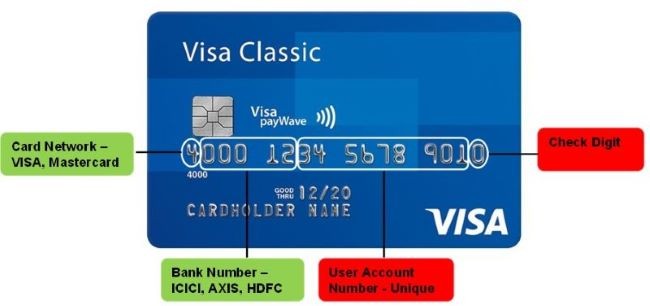The digital landscape in 2025 is characterized by an unprecedented reliance on electronic transactions, rendering the debate over the safety of sharing card details more pertinent than ever. With the advent of advanced technologies, the mechanisms employed to protect sensitive information have evolved, yet they have not eradicated the inherent risks associated with online transactions. Understanding the multifaceted nature of this issue requires an analytical dissection of both the technological safeguards in place and the behavioral factors that influence consumer practices.
Historically, concerns regarding the sharing of card details have stemmed from high-profile data breaches that exposed millions of consumer records. Despite robust security measures, such as end-to-end encryption and tokenization, the vulnerabilities persist. In 2025, the retail landscape continues to grapple with cyber threats, with hackers employing sophisticated methods to infiltrate systems. Phishing scams, malware, and social engineering remain predominant dangers, compelling users to remain vigilant.
At the heart of this conundrum lies the question of trust. Consumers are often caught in a paradox: while they are increasingly reliant on digital interactions, they simultaneously harbor apprehensions about the safety of their financial information. They must decide whom to trust with their card details. E-commerce giants and established banking institutions invest heavily in cybersecurity to achieve and maintain consumer confidence, leveraging brands synonymous with safety and reliability. Such investments, however, do not guarantee immunity against potential breaches.
The surge in mobile wallet applications has introduced a new dimension to the discourse surrounding card security. These apps utilize biometric authentication and advanced encryption to enhance security, yet they have also prompted inquiries regarding the responsible use of personal data. Users often trade extensive information about themselves for convenience, raising ethical considerations regarding privacy. The realization that these applications store users’ data on centralized servers underscores a potential weakness. As users navigate the convenience of digital transactions, they must also reckon with the ramifications of sharing their card details.
Moreover, the proliferation of the Internet of Things (IoT) has further complicated the landscape. Smart devices, from refrigerators to home security systems, now possess the ability to make transactions autonomously. While this innovation seeks to enhance user experience, it also introduces additional vulnerabilities. Each connected device presents a potential entry point for cybercriminals. In essence, the safety of sharing card details in such an interconnected environment is contingent not only on software security but also on the hardware and network infrastructure that underpin these transactions.
Consumer behavior also plays an integral role in determining card safety. Research indicates that individuals often display a disconcerting level of apathy toward security protocols. Password reuse, for instance, remains a common practice, undermining the efficacy of unique credentials designed to safeguard personal information. As consumers become numb to the repeated warnings surrounding cybersecurity, their compliance with security measures diminishes. Consequently, the responsibility of securing financial information has shifted from institutions to individuals, necessitating increased awareness and proactive measures on the part of consumers.
The rise of decentralized finance (DeFi) presents an alternative to traditional banking systems, enabling peer-to-peer transactions without intermediaries. While this innovation holds immense promise for financial autonomy, it is accompanied by challenges regarding security and regulatory oversight. Users engaging with DeFi platforms must navigate uncharted territory, where the lack of accountability can expose them to significant risks. This aspect warrants scrutiny, particularly when juxtaposed against the more regulated environment of conventional financial institutions. The freedom to transact without restrictions is alluring; however, it inherently carries the weight of responsibility for the user.
As society forges ahead, the intersection of artificial intelligence (AI) and cybersecurity is evolving rapidly. AI’s capacity to analyze vast amounts of data in real-time enables the identification of suspicious activities that may indicate fraudulent transactions. However, this technological advancement is not without its limitations. Cybercriminals are also harnessing AI to launch more sophisticated attacks, creating an ongoing arms race between protection and exploitation. Consumers must remain cognizant of this dynamic, understanding that while advancements in AI may bolster security efforts, the potential for misuse looms large.
Therein lies the crux of the discussion: how safe is it to share card details in 2025? The answer is neither unequivocal nor simplistic. The perceived safety is a tapestry woven from myriad threads – technological advancements, consumer vigilance, behavioral patterns, and a continuously evolving threat landscape. For some, the convenience afforded by digital transactions outweighs the risks, while others may prefer the tangibility of cash or physical alternatives.
Ultimately, in navigating the complexities of card-sharing safety, an amalgamation of vigilance, knowledge, and adaptive strategies will be paramount. As digital transactions become inextricably entwined with everyday commerce, consumers will need to adopt a proactive stance towards security, fostering a deeper understanding of the ecosystems in which their financial transactions occur.
In conclusion, while significant strides have been made in the realm of cybersecurity, the ongoing evolution of technology demands that stakeholders remain vigilant. The discourse surrounding card details will continue to unfold, reflecting broader societal patterns and technological advancements. In an age where trust is often rendered ephemeral, the onus remains on individuals and organizations alike to foster a safe and secure digital landscape.








Leave a Comment